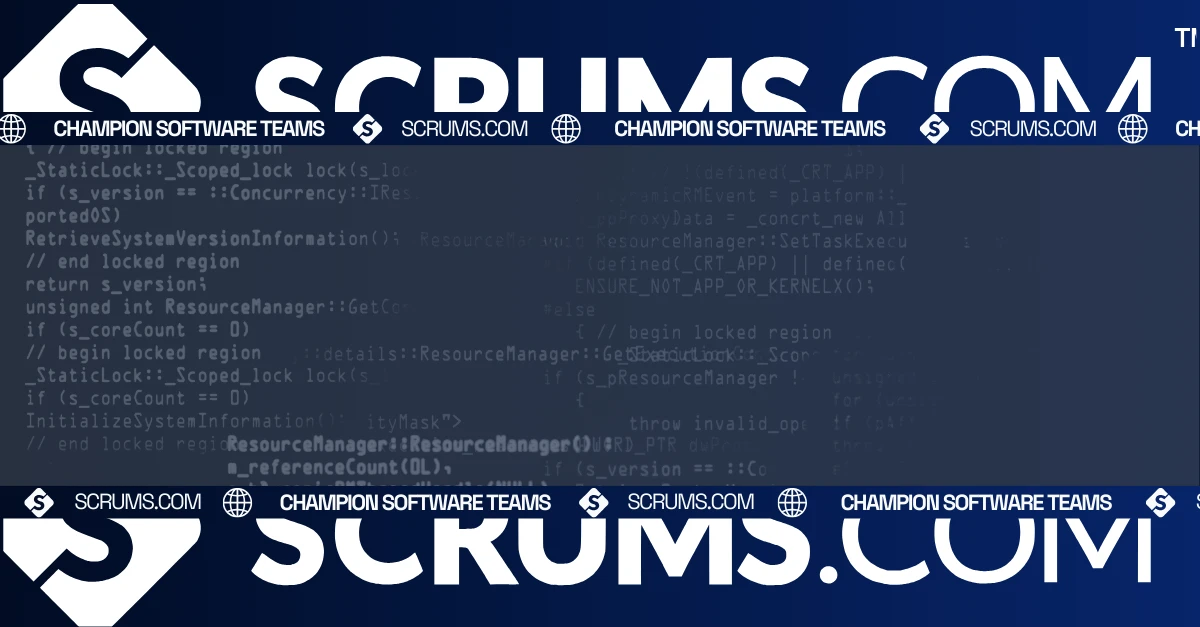Software Development Life Cycle: A Tech Term Explained
About the Software Development Life Cycle
The Software Development Life Cycle (SDLC) is a structured process used in software development services to design, develop, test, and deploy software applications. It provides a systematic approach to building software that meets both business needs and technical requirements. The SDLC framework helps ensure that software is delivered on time, within budget, and with the desired level of quality. By following the SDLC, teams can effectively manage project timelines, resources, and risks, leading to successful software development outcomes.
Phases of the Software Development Life Cycle
Planning and Requirement Analysis:
- Description: The planning phase is the foundation of the SDLC, where project goals, scope, and feasibility are defined. During requirement analysis, the needs of the end-users and stakeholders are gathered and documented. This phase involves detailed discussions and documentation to ensure that the project’s objectives are clearly understood.
- Activities: Project planning, feasibility study, resource allocation, and requirement gathering.
- Outcome: A comprehensive project plan and a requirement specification document.
System Design:
- Description: In this phase, the software's architecture and design are created based on the requirements gathered in the previous phase. The system design includes both high-level design (HLD) and low-level design (LLD), covering the overall system architecture, data models, user interfaces, and other critical components.
- Activities: Designing data flow diagrams, system architecture, user interfaces, and database structures.
- Outcome: Detailed design documents that serve as a blueprint for development.
Implementation (Coding):
- Description: The implementation phase is where the actual coding takes place. Developers translate the design specifications into code using appropriate programming languages and tools. This phase is typically the most time-consuming as it involves writing, testing, and integrating code.
- Activities: Writing code, conducting unit tests, and integrating modules.
- Outcome: Functional software modules that have been unit tested.
Testing:
- Description: After coding, the software undergoes rigorous testing to identify and fix defects or bugs. Testing ensures that the software functions as intended and meets the specified requirements. Different testing methods, such as unit testing, integration testing, system testing, and acceptance testing, are employed during this phase.
- Activities: Executing test cases, identifying and fixing bugs, and validating functionality.
- Outcome: A stable software product that meets quality standards.
Deployment:
- Description: Once the software has been tested and approved, it is deployed to the production environment for use by the end-users. Deployment can be done in phases (such as beta releases) or as a full release, depending on the project’s strategy.
- Activities: Deploying the software to production, configuring the environment, and performing final validation.
- Outcome: A fully operational software application available to users.
Maintenance and Support:
- Description: The final phase of the SDLC involves maintaining the software post-deployment to ensure it continues to operate correctly. This includes fixing bugs, updating the software to accommodate changes in user requirements, and enhancing features to improve functionality.
- Activities: Monitoring performance, resolving issues, and releasing updates or patches.
- Outcome: A well-maintained software application that remains functional and relevant over time.
Importance of the Software Development Life Cycle
Structured Approach:
The SDLC provides a clear structure and framework for managing software development projects, ensuring that all aspects of the project are carefully planned and executed.
Improved Quality:
By following a systematic process, the SDLC helps in delivering high-quality software that meets user requirements and industry standards.
Risk Management:
The SDLC includes phases for identifying, analyzing, and mitigating risks, which reduces the likelihood of project failures or costly rework.
Resource Optimization
The SDLC ensures that resources, such as time, budget, and personnel, are used efficiently throughout the project, leading to cost-effective development.
Client Satisfaction:
By adhering to the SDLC, software development teams can better meet client expectations and deliver software that aligns with their business goals.
Best Practices in the Software Development Life Cycle
Involve Stakeholders Early and Often:
Engage stakeholders throughout the SDLC to ensure that their needs and feedback are incorporated into the development process. This helps in building software that truly meets user expectations.
Prioritize Documentation:
Comprehensive documentation at each phase of the SDLC is crucial for ensuring clarity and continuity. Proper documentation helps in maintaining consistency and facilitates future updates or enhancements.
Automate Testing:
Implement automated testing to improve efficiency and accuracy during the testing phase. Automation can help quickly identify and resolve issues, speeding up the development process.
Adopt Agile Methodologies:
Consider using Agile methodologies within the SDLC to allow for flexibility and iterative development. Agile approaches enable teams to respond quickly to changes and deliver incremental updates.
Focus on Security:
Integrate security considerations into every phase of the SDLC to protect the software from vulnerabilities. Conduct regular security assessments and ensure compliance with relevant standards.
Challenges in the Software Development Life Cycle
Changing Requirements:
Requirements may change during the development process, leading to scope creep and potential delays. Managing these changes effectively is a critical challenge in the SDLC.
Resource Constraints:
Limited resources, such as time, budget, or skilled personnel, can impact the success of a software development project. Proper resource planning and management are essential to overcoming this challenge.
Integration Issues:
Integrating various modules or third-party services can be complex and may lead to compatibility issues. Thorough testing and planning are necessary to ensure seamless integration.
Ensuring Quality:
Maintaining high quality throughout the development process requires rigorous testing, code reviews, and adherence to best practices. Balancing quality with deadlines is often a challenge.
Risk Management:
Identifying and mitigating risks early in the SDLC is crucial to prevent project delays or failures. Effective risk management strategies should be in place to address potential issues.
Common FAQs Around this Tech Term
The SDLC is a structured process used in software development services to design, develop, test, and deploy software. It ensures that software is delivered on time, within budget, and with high quality.
The SDLC provides a systematic approach to software development, helping teams manage project timelines, resources, and risks effectively. It ensures that the final product meets both business and technical requirements.
The main phases of the SDLC are Planning and Requirement Analysis, System Design, Implementation (Coding), Testing, Deployment, and Maintenance and Support.
The SDLC includes phases for identifying, analyzing, and mitigating risks, which helps in reducing the likelihood of project failures and ensuring the successful delivery of the software.
Yes, the SDLC can be adapted for Agile methodologies, allowing for iterative development, flexibility, and faster delivery of software increments.
Explore Software Development Blogs
The most recent trends and insights to expand your software development knowledge.







